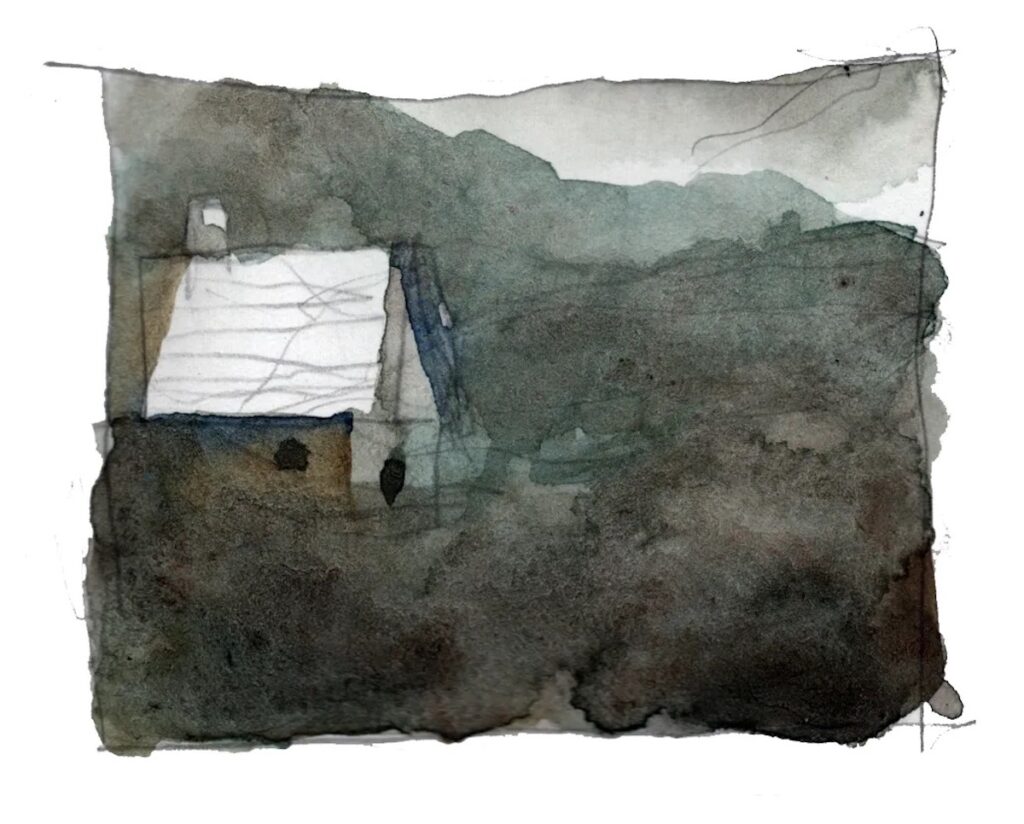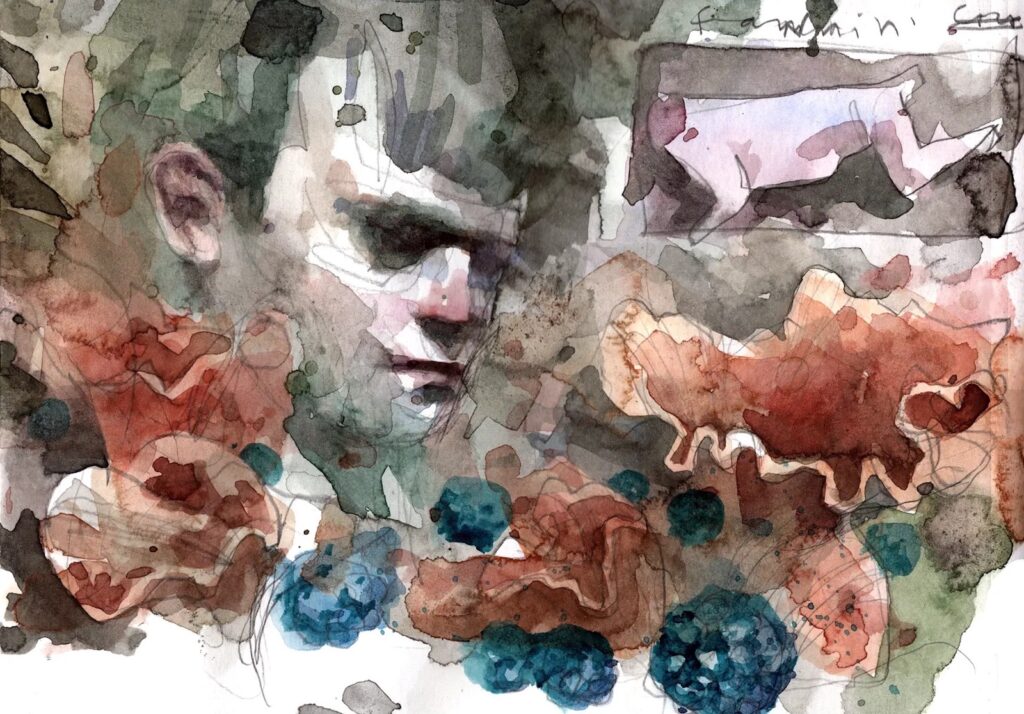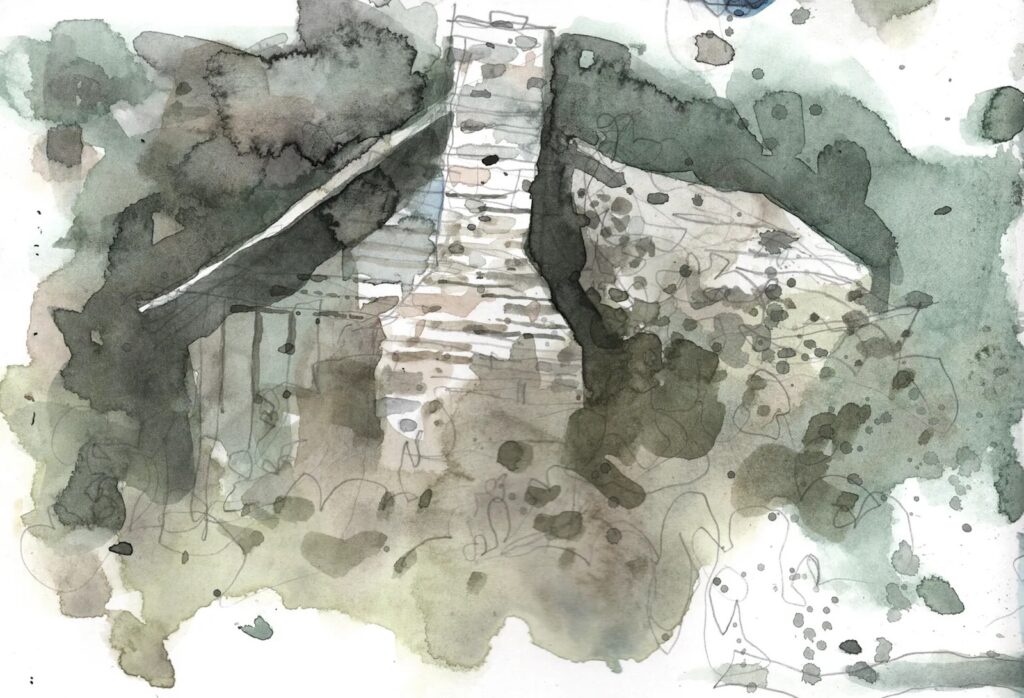In the north Georgia highlands, as the nights were falling earlier and colder, eight young siblings huddled outside a small, run-down cabin. It was 1945. Their mother and grandfather had recently moved the children there with no warning or explanation and alarmingly few provisions. The kids were scared, for good reason, wondering why their mother had not returned after a couple of days and what they should do about it.
The youngest, Jeannie, was an infant, and Bob was the oldest at ten. The eight brothers and sisters, the children of Roy Woods and Ruby Allen Woods, lived four years in the hillside shack in Fannin County—much of the time on their own—until church officials took them in 1949 to live in the Georgia Baptist Children’s Home, several hours away in South Georgia, near the small town of Baxley.
In the 1950s and 1960s, while the Woods kids were growing up in the Children’s Home, Franklin and Lee Ada Ray raised their children about fifteen miles away; the Ray family lived in a small house on about ten acres, where Franklin Ray operated a salvage yard. Franklin was both a natural storyteller and an engaged lister, and he regularly went into Baxley to make his rounds.
One of his regular stops in his later years was Honest Al’s Antique Emporium, where he visited with Jimmy, who ran the shop. Most days, they joked and talked about the absurdities of life. But one day, in 2008, Jimmy told a story he had not shared before, about his early childhood in a tumble-down shack in north Georgia.
Jimmy was one of the eight Woods siblings who lived in the hillside shack in Fannin County. He was around two years old when their mother and grandfather moved the kids there, and sixty-five when he told Franklin Ray some of this story. When Franklin got home that day, he called his daughter, the author Janisse Ray. “My dad was the kind of person who could get in very deep with people, and he also wasn’t afraid of people’s stories,” Ray told me. “He always wanted to be ministering to people, on whatever level. Even as an old man, he would want me to take him to the nursing home. He would be on a cane, barely able to take care of himself, and I would sometimes put him in a wheelchair to wheel him around the nursing home so he could bring joy to other people. It was his ministering. That’s what happened that day with Jimmy.”

Ray and her parents soon visited Jimmy Woods at home. The story he shared was deeply moving to her, but Ray questioned whether she was the person who should write about it. She has grappled with that question many times in her career. Like her father, Ray makes genuine connections with people from many walks of life. She has written about some of the hurts and blessings in her own life, beginning in 1999 with Ecology of a Cracker Childhood, Ray’s bestselling memoir about growing up in the junkyard near Baxley and in the longleaf-pine ecosystem of South Georgia.
Because Ray writes with heart, openness, and skill, people have approached her often over the years in hopes that she might tell their story. “For most of them, I say, ‘Your job is to figure out how to write, and to write your own story,’” Ray told me. She figured this probably was true for the Woods brothers and sisters as well.
Still, Ray wanted to know more. Over the next several years, despite her doubts, she returned to the story when she could. She talked extensively with Jimmy, who once said to her, “You never saw a kid wanted a father like I wanted a father.” She interviewed four other siblings and researched the contexts of their lives.
It became clear to Ray that, for several reasons, it was her job to write about the Woods family. For one, she is deeply curious about how adults and society relate to children, and she is angry about the abuse and neglect that so many children suffer. In a sense, Ray said, writing about the Woods family also felt personal. The author shared that she has a loved one who suffered severe childhood trauma and continues to struggle today; and Ray approached telling the Woods’s story partly as a chance to better understand her loved one’s story as well.
Ray has focused on nonfiction and poetry for most of her career, but she decided she would need to write about the Woods kids in the form of a novel. The siblings were so young during their four years in the shack that they could discern only bits and pieces of the situation at the time, so their memories had many gaps.

As adults, the siblings filled some of the holes by sharing memories with each other, and they told Ray what they could. But Ray needed more to create a coherent narrative, and the form of the novel empowered her to imagine details in conversations, scenes, and events. The fact that Ray was dealing with sensitive issues and real people also pointed her toward fiction.
“In most instances names have been changed to protect identities and here are used fictitiously,” Ray states in the preface to the novel, published as The Woods of Fannin County in 2022. “Similarities with other real people are accidental. Otherwise, the story is as close to the truth as possible.”
The novel begins with the fall morning when the fictionalized characters of Ruby and her father, Mr. Allen, load the children into a mule-drawn wagon and ride into the highlands north of Morganton. Ruby stays with the children in the shack for a couple of days and cooks a kettle of hominy, then goes back into town. She returns after a couple of days, but as the novel unfolds, Ruby stays away longer and longer; meanwhile, the children’s father, Roy, has remarried and started another family in Michigan. In Ray’s telling, the children survive increasingly by their own wits and determination, searching constantly for food, firewood and wild plants.
Drawing on the memories that the siblings revealed to her in interviews, Ray imagines and seeks to convey their attempts to make sense of their bewildering situation in this place in the southern Appalachians, and to find healing later in their lives. “There was some kind of power that I felt in telling this story in a fictional way,” she said.
And in feedback from readers, Ray has seen a wide range of people connecting with the story, as it seems to spark both curiosity and a mix of strong emotions. The story has a certain momentum or “life of its own,” in her view. A key source of the momentum is Ray’s exploration of themes that transcend the specific people and place of the story, including the resilience of children, as well as their vulnerability; the impacts of trauma across generations; the harm created by class inequities; and the human capacity for compassion.
For example, a reader might find it difficult to have compassion for the mother and grandfather who neglected the children, but in getting to know the family and writing the novel, Ray felt great compassion for the real-life Ruby Woods; it seemed to her that Ruby was doing the best she could with virtually no economic power to draw upon in raising the children and no meaningful support from their father or her family. Ray also doubts that Ruby had access to birth control or knowledge of other preventions when she became pregnant.
In real life, Ruby was eighteen in 1934, when she and Roy were married; she gave birth to Robert the next year and had nine more children over the next decade, including two who were stillborn. The couple moved to Michigan, but Ruby and Roy divorced. Ruby came back with the children to Fannin County.
“The children were much more angry at their mother than their father,” Ray noted. “And what’s strange is that their father had another entire family, with children the same age as they were. You know, his sin in this is exponentially greater than hers. He knew where the children were. He came there to visit them one Christmas, brought some trinkets, and left again.”

In addition, census records show that Ruby’s mother died around this time, so she and her father were dealing with that loss. A caring family and other support were not available to Ruby to the extent that she needed them, and her children paid a large part of the price. “You get to this place where you have to stop blaming individuals for systematic traumas or systematic oppressions,” Ray contended. “People want to blame Ruby, but I’ll say again, I think it’s terrible that we keep blaming individuals for systemic problems.”
“There were very, very low-level jobs that she could have done, and she attempted to do,” Ray added. “Ruby just had no economic power at all. I think she should have given the children to the state a lot sooner than she did, and they wouldn’t have had the experience that they went through. But money was definitely not on her side.”
In truth, the years in the shack were even harder than Ray depicted them, according to Richard Woods, one of the brothers. Richard has appeared with Ray at a couple of book events, and he also spoke with me for this piece, describing his time in the shack this way: Over his lifetime, when he has seen homeless dogs along the highway, looking hungry, forlorn, and scared, he empathizes with them. That is exactly how he and his siblings often felt during those early years, like abandoned and desperate creatures. Yet, as bad as things were at the shack, the kids feared that being taken away and possibly separated could be worse. They had no way of knowing.
The children were somewhat hidden away in the hills, but this was by no means a wilderness, and they were not invisible. “I’m pretty sure that a lot of people knew we were up there,” Richard told me. “You couldn’t hide it.”
After living in the Children’s Home, working on the home’s farm, and attending school, Richard and six of his siblings went to college, while Jimmy joined the US Marine Corps. Many years later, Richard settled in northern Alabama—back in the southern highlands—and built a successful steel-fabrication business. He reconnected with Ruby and his grandfather Allen for brief periods, but they both soon vanished from his life again. Sisters Beverly and Becca are living today as well, while Jimmy and four other siblings have passed away.
The sisters and brothers were dealt a heavy dose of hurt and shame when they were very young. Who could blame them for not wanting to revisit those memories? And yet, talking with trustworthy people about such traumatic experiences is a critical step toward healing. For the Woods siblings, an important step came during a Thanksgiving gathering in the 1980s, when they took a chance and started talking together about the painful parts of their past. They talked for hours, according to Ray. But they retreated after that and found it difficult to continue the conversation.
A couple of decades had passed since the Thanksgiving gathering, when Jimmy Woods decided to tell the story to Franklin Ray in the antique shop in Baxley. That connection started the process in which Jimmy and several of the siblings talked openly with Ray, and they found that sharing with her and one another was a major step on the path toward healing.

In the novel, Ray said, she based the fictionalized character of Bobby largely on the memories and emotions that Jimmy shared with her. A key role for this character is to express the long-lasting impacts of the trauma suffered by the siblings. “I have felt the unworthiness riding hard within me,” Bobby states in the novel. “It never would let go . . . It took me fifty years to even begin to look at this.”
“I kept turning away from it and it kept trying to make me look,” Bobby says. “Then one day it grabbed me, and I couldn’t turn away from it.” Bobby cried that day, sitting alone outside his home. He was not done with the hurt after that, but he felt more hopeful in facing the trauma.
The real-life Richard Woods and his wife, Kim, have been married for forty-five years. He told me with a chuckle that, at age 83, he was ready to retire, but his customers refused to let him go. He has certainly felt bitter about what his parents did and failed to do, and he struggled to find his way at times, Richard said. But mainly he felt that he has lived a good life, with his children and grandchildren and many other blessings, starting with the day in 1949 when the kids were rescued from the hills of Fannin County. “I think God sent somebody up there and got us,” Richard said. “I think that was the biggest blessing I ever had; all of us do.” The relationships with Ray have been a great blessing and source of healing power as well, Richard added. She honored their experiences by listening and by sharing them in a compassionate way.
In her writing, Ray works to deal honestly with the pain and obstacles that her subjects encounter in life. She does not write more healing into the Woods’s story than is true from her viewpoint. She does not try to resolve the lingering questions or offer only uplifting conclusions. “People tell me that they recoil when they think about the damage that I write about,” she said. “But I think there’s something so healing in thinking about these resilient kids who frickin’ survived for four years in the woods.”
Bringing light to their resilience was one of the joys for Ray; working closely with the Woods family was another. It turned out that she enjoyed that cooperative part of the process, which was a pleasant surprise to her. When it comes to writing, Ray said, she doesn’t usually look for a great deal of collaboration.
“I’m a nice person, but I like to do things my way,” she said. “But working with all those grown [Woods] children, and then their families, it sort of expanded my own family in a way that’s been really wonderful. It was so healing for this family. And there’s a power in realizing that your story can touch people.”
Rob Shapard is a writer and historian who focuses on the American South. His current projects include an oral history of Longleaf Pine restoration, and a biography of Reuben B. Robertson Sr., former president of Champion Pulp and Paper. Find more of Rob’s work at taprootsjournal.com/.

